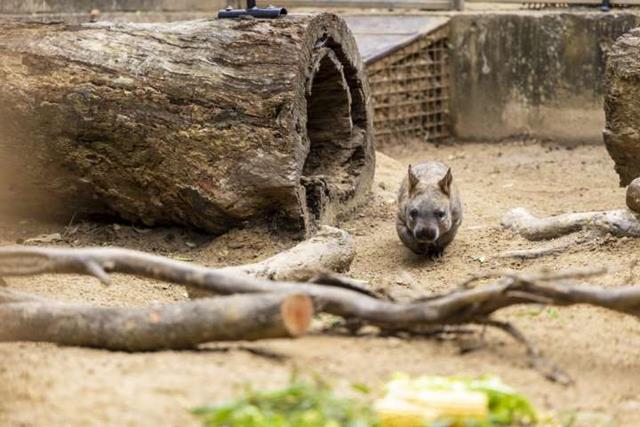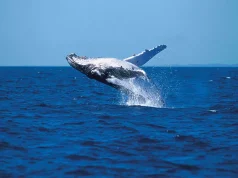
The little joey was born to experienced mum Jedda in December last year but has only just started to emerge from her mother’s pouch in recent weeks.
The joey has recently been identified as a little male and has been given the name ‘Wadu’ by his keepers which means ‘wombat’ in the Wirangu language of South Australia.
Senior Backyard to Bush Keeper Rebecca Russell-Cook said, “The name Wadu was given not only to acknowledge the native homeland of Southern Hairy-nosed wombat but it also a tribute to the last male joey that was born here at the Zoo, Waru, who holds a very special place in the heart of many of Taronga’s community”.
“Wadu, has followed in his older sister Winya’s footsteps and is already quite the confident and independent joey. He is too big for his mum’s pouch, now, but that doesn’t stop him from attempting to try to squeeze his way in now and then. We have witnessed some very impressive investigative and exploratory behaviours as he navigates his way on top of and around the numerous logs and branches in his habitat” says Russell-Cook.
“Jedda is quite an experienced mum, as this is now her third joey, however whenever Wadu does call out wanting to get her attention she is straight to his side, which is exactly the type of behaviour we want to be witnessing,” says Russell-Cook.
When born, all species of wombat are just the size of a jellybean. Being marsupials, mothers are born with a pouch which acts as an external womb for the joey to grow and develop and at around 6-7months, the joey will start to peek out of its mother’s pouch. At around 7-9 months, the joey will start to fully emerge from the pouch and explore its surroundings.
Here are some of the best spots to see a wombat in the wild:
- Maria Island, Tasmania: You won’t be on this island long before you encounter a wombat and with breeding season all year round, there’s even a high chance of spotting a joey!
- Emirates One&Only Wolgan Valley, New South Wales: Easiest to spot at dusk, Wolgan Valley’s 2,800 hectares of untamed beaty is the perfect spot for a hike in the many native reserves and nature parks to hunt down a sighting of a wombat. To make the most of your visit why not stay at the luxury Emirates One&Only resort.
- Ranger Guided Tour of Tidbinbilla Nature Reserve, Canberra: Set yourself the challenge on a visit to Tidbinbilla Nature Reserve to spot five famous native Australian animals that call the area home: the koala, platypus, kangaroo, emu and of course, the wombat.
Guests visiting Taronga Zoo Sydney must ensure they pop down to Taronga’s Backyard to Bush to see if they can catch a glimpse of Wadu the wombat joey. Wadu is not the only new addition to Backyard to Bush, his emergence happens to coincide with the emergence of two adorable Red Kangaroos and the recent birth of five baby goats!
Taronga is proudly not-for-profit, so every dollar you spend supports the zoo’s vital conservation efforts and has the power to protect the world’s remarkable wildlife.





